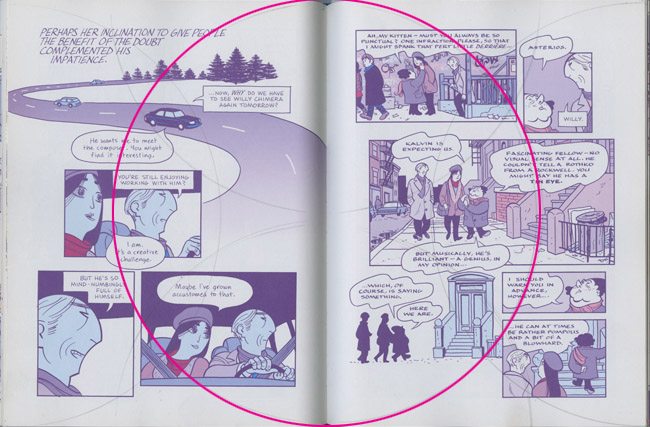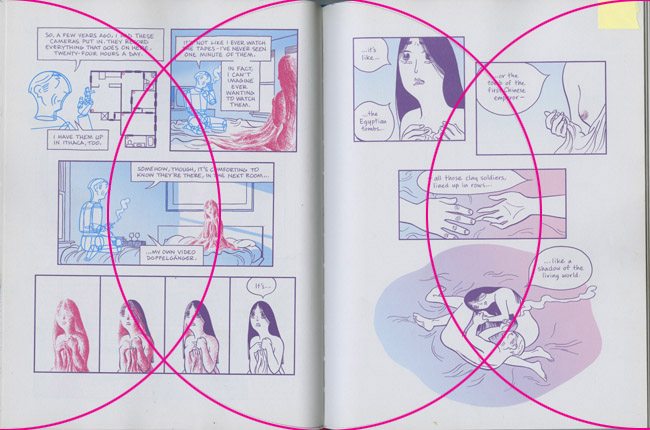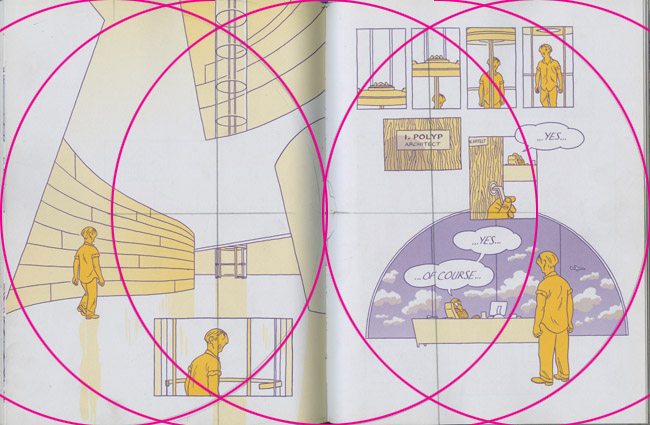This week we're going to look at some spreads from David Mazzucchelli's Asterios Polyp.
For those following along this is another example of being aware of the center square of the double page spread. What I really appreciate about Asterios Polyp is the pacing of the spreads. Rarely do fixed grids or repeating layouts continue for more than a spread or two. I feel that DM was very conscious of how each spread flowed into the next when he composed his pages. I feel that he definitely took the spread into account to determine the pacing. Meaning he didn't compose his pages separately and then hope that they flowed together.
I asked DM if he used a grid map to compose his spreads and basically he said that he did not. He said that he spent a lot of time "moving things around". What's interesting to me is that, regardless if he used a grid map or not, so many of the elements line up with the center circle.
Once I was teaching a class in my studio and I would randomly open Asterios Polyp to a spread and diagram it from the center out. The folks in the class practically fainted when they would see a random spread "line up" right in front of their eyes with a few twists of a compass. It's fun! Try it at home!
Also, if you pull more arcs from where the circles intersect you will see how other things line up. Look at the last two scans. Many of the elements on the page and spread relate directly to precisely where the circles intersect. To me, this where formalism and the needs of the story can intersect as well.
For example, look at the next to last scan. The figures are arranged on the spread to be inside or outside the center vesica piscis of each page. The arrangement mirrors the the unity and division of the characters. Formalism and meaning working in harmony.











